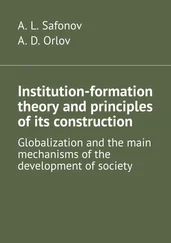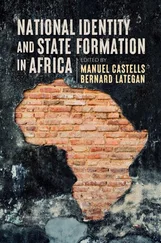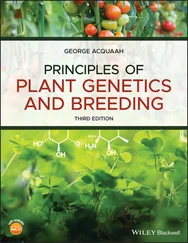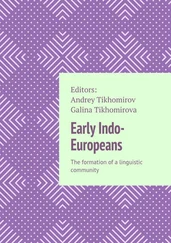Planet Formation and Panspermia
Здесь есть возможность читать онлайн «Planet Formation and Panspermia» — ознакомительный отрывок электронной книги совершенно бесплатно, а после прочтения отрывка купить полную версию. В некоторых случаях можно слушать аудио, скачать через торрент в формате fb2 и присутствует краткое содержание. Жанр: unrecognised, на английском языке. Описание произведения, (предисловие) а так же отзывы посетителей доступны на портале библиотеки ЛибКат.
- Название:Planet Formation and Panspermia
- Автор:
- Жанр:
- Год:неизвестен
- ISBN:нет данных
- Рейтинг книги:3 / 5. Голосов: 1
-
Избранное:Добавить в избранное
- Отзывы:
-
Ваша оценка:
- 60
- 1
- 2
- 3
- 4
- 5
Planet Formation and Panspermia: краткое содержание, описание и аннотация
Предлагаем к чтению аннотацию, описание, краткое содержание или предисловие (зависит от того, что написал сам автор книги «Planet Formation and Panspermia»). Если вы не нашли необходимую информацию о книге — напишите в комментариях, мы постараемся отыскать её.
Audience
Planet Formation and Panspermia — читать онлайн ознакомительный отрывок
Ниже представлен текст книги, разбитый по страницам. Система сохранения места последней прочитанной страницы, позволяет с удобством читать онлайн бесплатно книгу «Planet Formation and Panspermia», без необходимости каждый раз заново искать на чём Вы остановились. Поставьте закладку, и сможете в любой момент перейти на страницу, на которой закончили чтение.
Интервал:
Закладка:
There is no reason to limit ourselves to specifically human actions here. The quote of Aristotle works perfectly well for any intelligent observer anywhere in the universe. It is reasonable to suppose that extraterrestrial intelligent observers also have specific capacities and that among those capacities is the capacity to deliberate upon the consequences and meanings of their own actions. 6 There is a deep sense in which Copernicanism is built into this attitude, which is exactly what we need in order to conceive of a truly global astrobiological landscape on the Milky Way level.
3.3 Cultural Evolution and Directed Panspermia
While the continuity thesis arose in connection to abiogenesis, there is no reason for it to remain constrained there; the same reasoning applies to noogenesis or any similar key transition. Again, this is of key importance when using the continuity thesis as heuristics . If some empirical data or well-motivated theoretical model appears which would indicate discontinuity, we would be justified in rejecting the continuity thesis, of course. However, as long as such empirical or theoretical insights are lacking, we should be free to use it and investigate its consequences, even if some of them are extremely speculative and far-fetched. 7
While the continuity thesis suggests that the transition from non-life to life is easier than a priori thought, it does not really prescribe where and how the transition did actually occur. It is still possible that early life came to Earth from somewhere else, in particular from Mars, which had perhaps been more conductive to abiogenesis than our planet at that epoch (e.g., [3.18]). The scenario in which abiogenesis first occurred on Mars and some early life forms were subsequently transported to Earth (while, presumably, Martian life either became extinct or remained in very limited enclaves after the environmental conditions there deteriorated 3.5–4 Gyr ago; see [3.37]) is as perfectly in agreement with the continuity thesis as are any of the conventional abiogenesis scenarios on Earth. Mutatis mutandis , other forms of panspermia, are consistent with the continuity thesis and the epistemological “machinery” behind it.
Now, there is an important consideration to take into account: while some panspermia could clearly occur naturally, and in an optimistic case, be effective very slowly over interstellar distances (see also the chapter by Balbi in this volume [3.7]), the constraints are much weaker in the case of its technogenic version, directed panspermia . The latter has been suggested by two titans of biochemistry, Francis Crick and Leslie Orgel, as a halfserious solution for multiple problems facing origin of life research: maybe our planet has been seeded, intentionally or not, with early life forms by an advanced technological civilization [3.17]. Directed panspermia is often made to sound like science fiction—which should not be taken pejoratively in the first place—although it is a scientifically legitimate hypothesis or a class of hypotheses. Critics have charged that it is untestable, although it is at least doubtful whether it is indeed so, or we should emancipate from the common myopia inherent in human short-term timescales in epistemology as well.
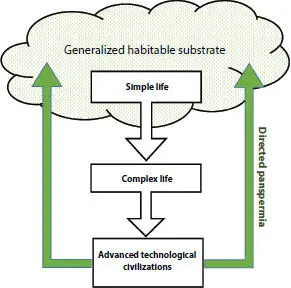
Figure 3.1 A symbolic representation of the feedback created by directed panspermia. It appears in addition to all other feedbacks studied by astrobiologists such as Chopra and Lineweaver [3.12].
The central feedback loop of directed panspermia is schematically shown in Figure 3.1. It seems uncontroversial that simple life is a precondition for complex life in both causal and chronological senses , and ditto for complex life in relation to advanced technological civilizations, such as those sought for in SETI searches. (Arrows in the figure are meant to relate primarily to the causal ordering.) While those issues are uncontroversial, the same cannot be said for the question what exactly can advanced civilizations act on, through one form of directed panspermia or another. We may imagine that this applies to a prospective habitable planet, like the Hadean Earth, in accordance with the original scenario of Crick and Orgel, but there is no reason not to consider other kinds of potential habitats. It is crucial to emphasize the potentiality here, since we now know that habitability in the medium to long term depends on whether a site is indeed inhabited or not, due to multiple complex biotic feedbacks [3.12]. This means that there was nothing obvious in habitability of Earth either—when observed from the Hadean temporal vantage point. On the contrary, something like very precise and advanced astrobiology and ecology had been required at the time (on behalf of potential Seeders) to predict even vaguely what could the hypothetical terrestrial biosphere evolve into in billions of years hence.
Taken together with the ever-increasing and at present inconceivable capacities of advanced biotechnology, this means that we can hardly specify where and how successful could the intentional seeding with life be. Hence, it seems appropriate to label the substrate where both local abiogenesis (in the Oparin-Haldane manner or any of its subsequent elaboration) and directed panspermia occur as “generalized habitable substrate” as a category wider than the usual—and rather narrow—set of habitable terrestrial planets. It is not, in the spirit of the words of Biblical Job cited above, enough to see “the waste and desolate land” in order to “make the ground put forth grass”.
Clearly, concerns of Copernicanism should be taken into account here: should we consider ourselves typical as far as capacity and intentionality for seeding other worlds are concerned? Obviously, the problem here is that we are creatures of our epoch and cannot observe our species “in the fullness of time”. We can speculate, though, on the basis of some actual trends—and indeed we should, taking into account high relevance of the issue.
First, let us consider the unintentional form of directed panspermia. Since 13 September 1959, when Luna 2 impacted the Moon, humans have been bringing their artifacts in contact with other celestial bodies—more than 60 years by now. During that period, great advances in microbiology have demonstrated how resistant terrestrial bacteria are and how achieving complete sterilization of any human artifact is practically impossible. Although people have been aware of this issue for quite some time (and the Office of Planetary Protection has been pompously set up at NASA), it is reasonable to wonder whether humans have already seeded other cosmic bodies with terrestrial life forms—or will do it soon in the continuation of our space programs. In particular, this is relevant for Mars, which is now home to a wide variety of human landers and rovers, and it is a target for future crewed missions. While attempts of sterilizing probes may indeed decrease chance of such an unintentional directed panspermia, sterilizing human astronauts is clearly impossible (and would be a criminal offense even if it were possible!). It is not just Mars—we cannot be sure that even the effectively interstellar probes like the Pioneers and the Voyagers do not carry minuscule pieces of Earth’s biosphere toward the stars. The Office of Planetary Protection notwithstanding, it is highly doubtful that anything short of complete cessation of all astronautic efforts can, in fact prevent such an unintentional directed panspermia. (I call it unintentional since, obviously, propagation of the terrestrial life was never a conscious idea; clearly, the outdated prejudices about fragility of microorganisms encouraged a somewhat relaxed approach to the possibility, which is still discounted as “science fiction” in some circles.) Contrariwise, if our efforts in space gain extent and momentum, the probability for this kind of directed panspermia will certainly increase with time, even if protective measures are applied (cf. [3.54]). The increase in probability will occur on timescales of human culture which are extremely short in comparison to timescales for astrophysical, as well as biological evolution. We shall return to this important point later.
Читать дальшеИнтервал:
Закладка:
Похожие книги на «Planet Formation and Panspermia»
Представляем Вашему вниманию похожие книги на «Planet Formation and Panspermia» списком для выбора. Мы отобрали схожую по названию и смыслу литературу в надежде предоставить читателям больше вариантов отыскать новые, интересные, ещё непрочитанные произведения.
Обсуждение, отзывы о книге «Planet Formation and Panspermia» и просто собственные мнения читателей. Оставьте ваши комментарии, напишите, что Вы думаете о произведении, его смысле или главных героях. Укажите что конкретно понравилось, а что нет, и почему Вы так считаете.




